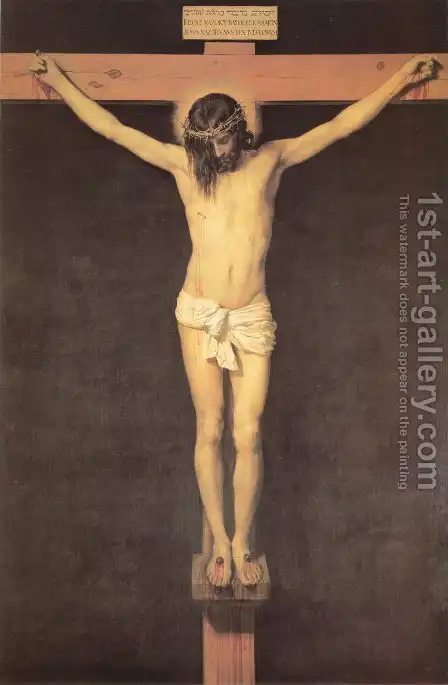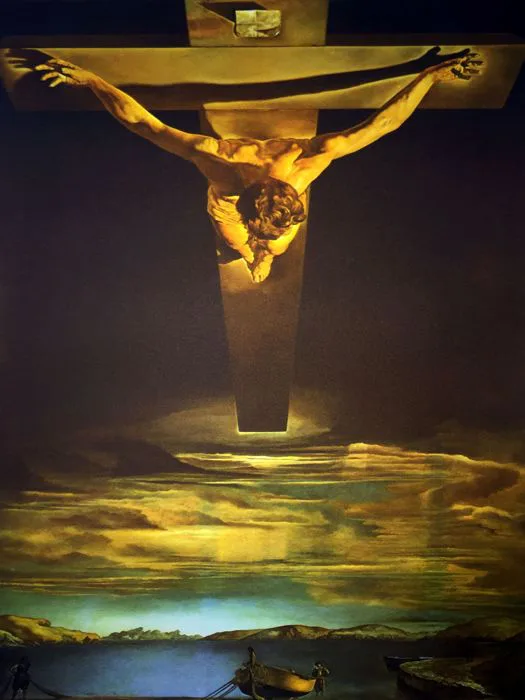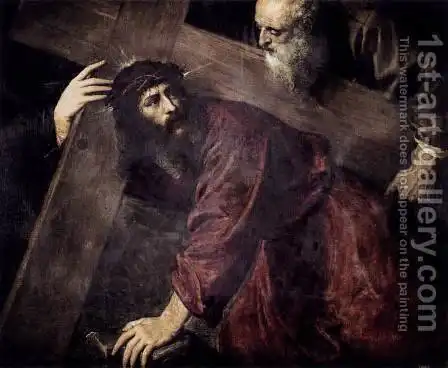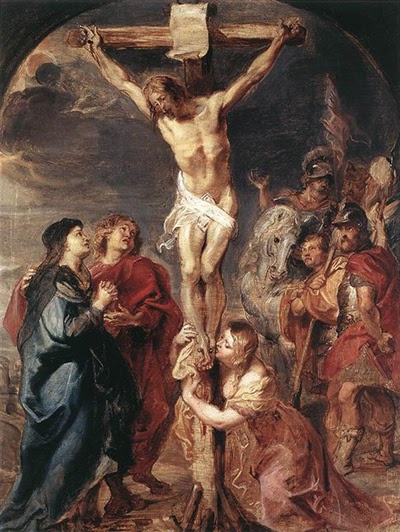Throughout history, artists have been commissioned to create religious artwork in the form of paintings and sculptures depicting major events in the Christian Bible, including Jesus’s Crucifixion on the cross.
While some consider the Crucifixion of Jesus Christ to be one of the most tragic moments in history, others view it as an act of ultimate sacrifice and divine love.
Artists throughout history have used their mediums to capture the emotional weight and tension behind Christ’s final moments alive on Earth, conveying the pain he endured both physically and emotionally with each stroke of the brush or splatter of paint.
Although Jesus’s death was an important part of his legacy and one of the most significant events in human history, few artists have been able to capture its emotional weight in their work. The following four paintings with Jesus on the cross represent some of the greatest religious artworks ever made.
4 paintings of Jesus on the cross

Christ Crucified by Diego Velazquez
Spanish painter Diego Velazquez was considered one of the greatest artists of the seventeenth century. Throughout his life, Velazquez painted a variety of subjects, but it was his religious paintings, such as Christ Crucified, that received the most praise. Christ Crucified by Diego Velazquez is a life-sized, oil on canvas depiction of the Crucifixion.
The work has a deliberately minimalist style with none of the grisly details nor supporting characters so often seen in earlier renditions of the theme. Its strong brushstrokes and plain background create a somber environment while also bringing attention to the body of Christ that dominates the painting.
The raw and respectful atmosphere can be attributed to Velazquez’s devout Catholicism and devotion to God, as well as to his interest in depicting real-life scenes. This piece has been reproduced countless times and can now be displayed on your own walls.

Christ of Saint John of The Cross by Salvador Dali
Though he is best known for his surrealist art, Salvador Dali (1904-1989) also painted religious icons. One of his religious paintings, ‘Christ of Saint John of the Cross,’ depicts how Dali studied classical religious paintings and developed his own take on them.
Inspired by his dream, in which he was convinced about the perfect portrayal of Christ, Dali created this marvelous piece of art. Although Christ is crucified here as per traditional renditions of the subject matter, Dali decided not to include any nails or blood in his crucifixion painting.
A triangle and circle dominate the composition; their geometric perfection is counterbalanced by the cloudy sky and rippling waters below. The abstract shapes are repeated throughout the painting and add to its visual interest.

Christ Carrying the Cross by Titian
The Christ Carrying the Cross by Titian is a compelling depiction of sorrow and suffering, showing Christ being led to Golgotha for his Crucifixion. The artist chose to use muted colors, which often made his work stand out and caused contemporaries to name him “the Sun Amidst Small Stars.”
We see the emotion in Christ’s face as he carries his cross to his eventual death. It’s a penetrating image of tragedy and suffering, both hauntingly beautiful and agonizing. A close-up scene with just Christ and his executioner, the style of art during this time period was dominated by close-ups of one or two figures.
A quote from Jane Austen, who was an avid fan, says, ‘It is a picture I am never tired of; its beauty is so true and fresh…’ A centerpiece of art rendered from a dramatic point of view, this Italian masterpiece by Titian is a true collector piece.

Christ on the Cross by Rubens
Rubens was familiar with this subject matter, as he had painted many crucifixion paintings during his lifetime. In fact, he became the Catholic faith’s most renowned painter during his career.
He pulls from classical techniques to create a scene rich with light and shadow. In the painting, Christ’s eyes are closed, and his expression is serenely peaceful and surrendered.
Made with oil on canvas, Christ on the Cross uses chiaroscuro and highlights to give three-dimensional depth to the flat painting. This painting is considered to be among Rubens’ greatest works of art since it shows such a strong visual image as well as an emotional and deeply spiritual sense.
The Bottom Line
Whether you are religious or not, it’s difficult to deny that the iconic symbolism of Christ on a cross is one of the most recognizable images in art history. The religious significance of Jesus on the cross as a symbol is undeniable, but that’s not why these paintings make our list.
These pieces are simply great works of art that have been influential in shaping how we view Christ’s Crucifixion. Anytime such powerful artwork is produced and succeeds in pushing an idea or message forward, it becomes more than just art—it becomes a cultural icon that you can always view at the 1st Art Gallery.
